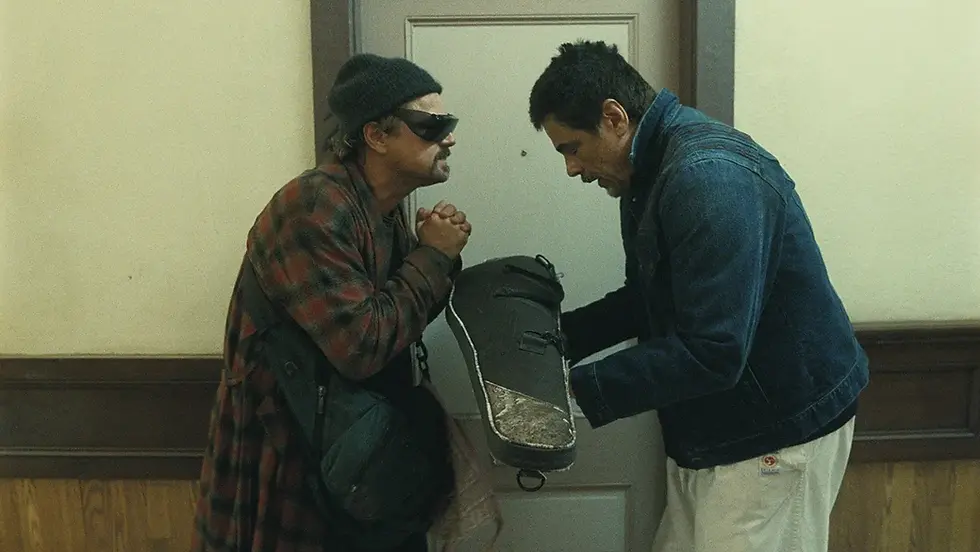The Hour Yields
- Joanna Gardner, PhD

- Nov 29, 2020
- 3 min read
Updated: Jun 10, 2024

I don’t remember who called with the news that my father had died. I don’t remember the conversation. All I remember is the daze in which I found myself putting on a coat, driving to a trailhead, hiking to a cold lookout over the Rio Grande valley. On the far side of that vast earthen bowl, the slump-shouldered Sangre de Christo mountain range seemed to gaze down into the valley, too. The river etched across the bottom of the bowl as a distant line of bare cottonwood trees, their leaves fallen for winter. Afternoon light tinted the landscape ocher and rose. I sat down on a flat tuff rock formed ages ago from volcanic ash. The mountains were still. The mesas, still. The rock, still. My body, still, for the first time since I received the call —
But stillness is not a literal, factual thing. In The Inner Reaches of Outer Space, Joseph Campbell reminds us that the notion of a “still point” doesn’t exist in the physical universe (3). In the field of time and space, there is no cessation of energy, nor any literal, irreducible point. And yet, the cosmos has contrived to create creatures who experience stillness and pointness. The still point is a subjective event, not an objective reality. And so, as Campbell says, anywhere can be a still point (4). I would add that any-when can be a still point, too. We conjure it ourselves. Psyche and imagination collaborate to create still points in our lives — and in myth.
Speaking of Pysche, remember that moment when Psyche first sees her husband by the light of the lamp? She gasps, time stretches, and Pysche falls forever in love with Love, as one does when one marries Eros. Then the sizzling lamp oil lands on Eros’s shoulder and the action resumes. Remember the moment when the Minotaur and Theseus catch sight of each other in the torchlit center of the labyrinth? The shock of the other’s muscular presence, the instant sizing up, the mutual rush of adrenaline right before they spring at each other to kill or be killed. Demeter realizing that Persephone is gone — gone, leaving the Great Mother without her child. These mythic still points burst with so much emotion that time cannot contain them. The clock stops, the moment opens, the hour yields to make way for hearts that swell past the edges of anything they’d felt or known before into experience so new that their souls must rearrange to make room.
The still point follows the last thing and precedes the next thing. It is the aperture of perception when past and future both hold the baton of our awareness. It reverberates with memory and foreknowledge, echoing into eternity.
In this imaginal when-where, the tyranny of duality relaxes its grip. The still point exists between, outside, and all around our paired modes of consciousness like, for example, past and future, hidden and revealed, life and death. The still point happens when modes of knowing meet and mingle. They amaze each other, change each other. Both of them realize that they aren’t separate at all but instead, they exist within each other. Then a new thing emerges and consciousness expands, growing its field of possibility to include more than it was able to before.
So the still point turns out to be more verb than noun, more spiral than dot, more flow than stasis, more experience than object, more awareness than location. But what is the point of this elusive point? The still point is the when-where in which we notice. Love. Fury. Awe. Campbell cites Novalis: “The seat of the soul is there, where the outer and inner worlds meet.” (Inner Reaches, 5) The still point happens when we occupy the seat of the soul. Every moment of existence offers our consciousness and imagination a new point of view, a new vantage. The ever-present, ever-available still point is the when-where in which relationship happens.
— And so, when your father dies, you hover in the still point between his life and his death. Between your family’s past and future. Between your life before and your life to come.
You float at the threshold between farewell and regret. You mourn what never was but might have been. You become the silent sky that blankets the desert valley. You become the valley. You become the rock that reaches down into earth, its back to the sky. You sense the ease with which earth and air welcome him back into themselves, no matter how he might or might not have lived, no matter how you might or might not have responded or understood. All of it was a gift — all of it, and you gather him into yourself at the exact same moment that you let him go.

%20BB.png)


